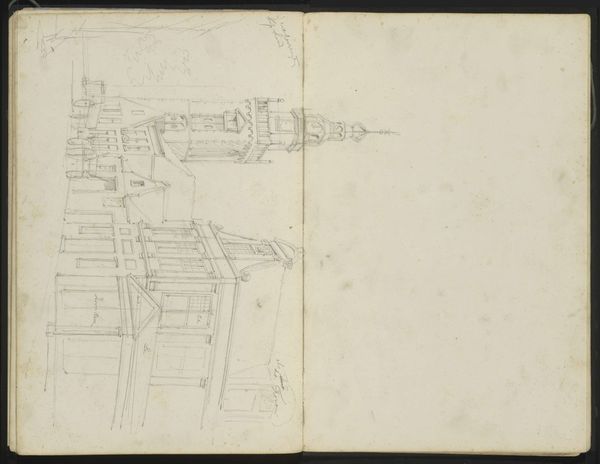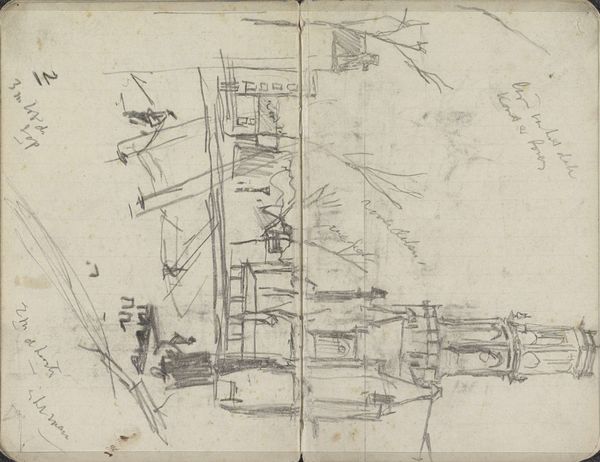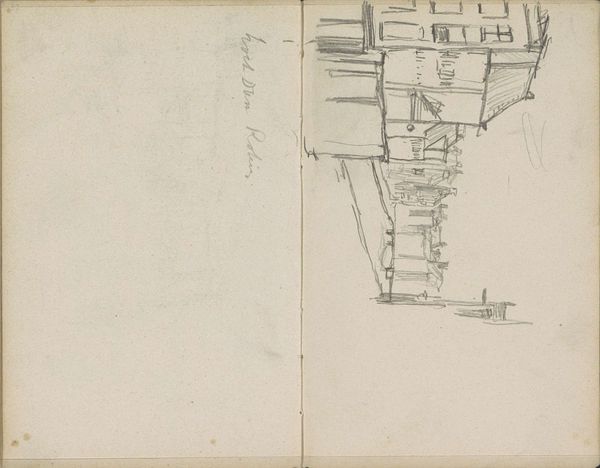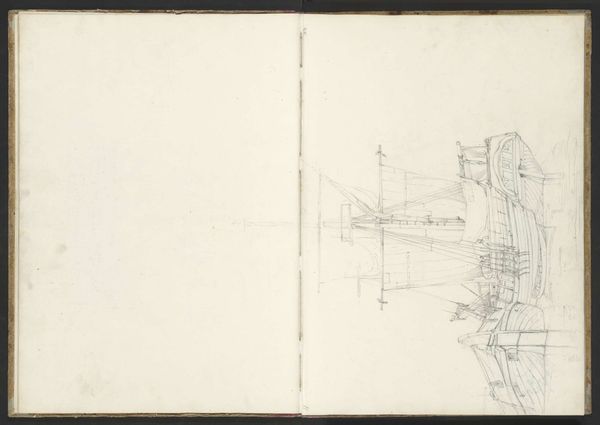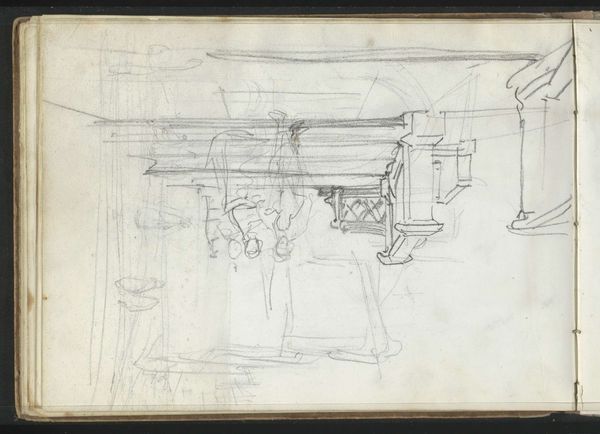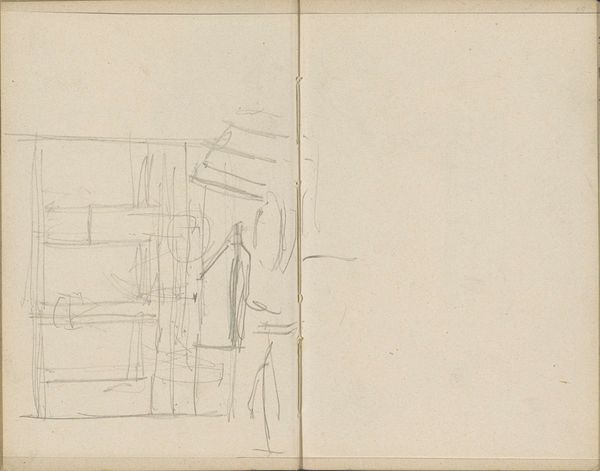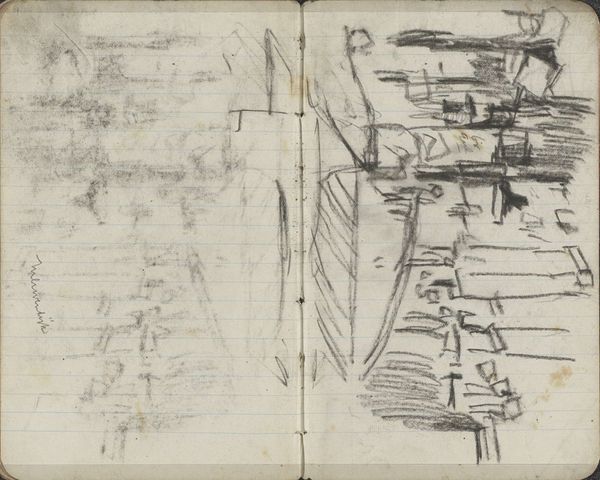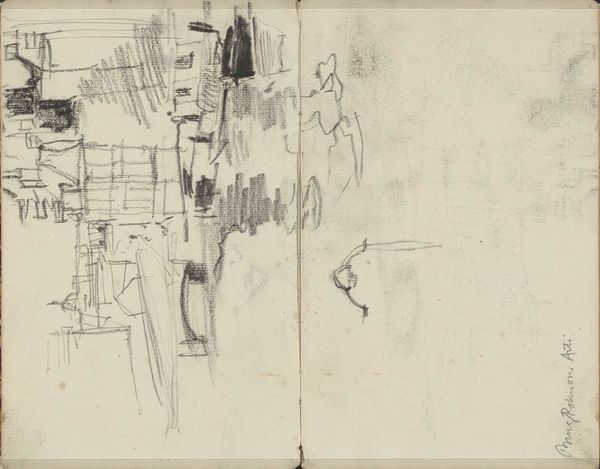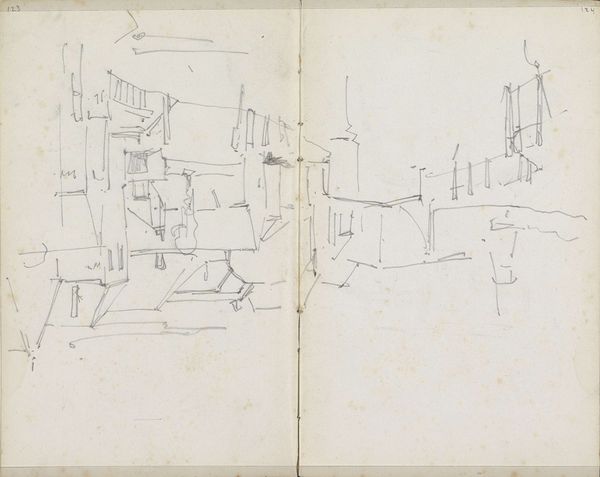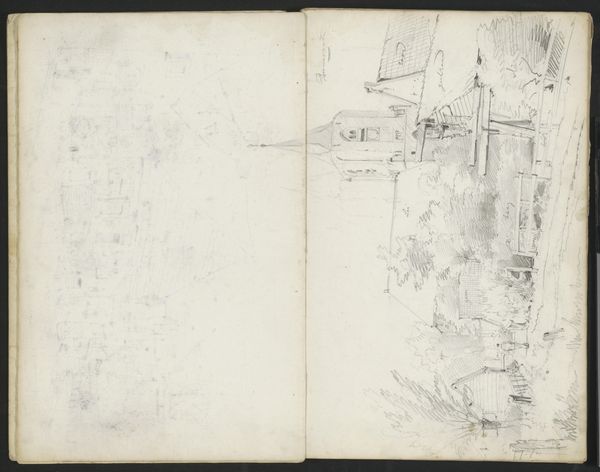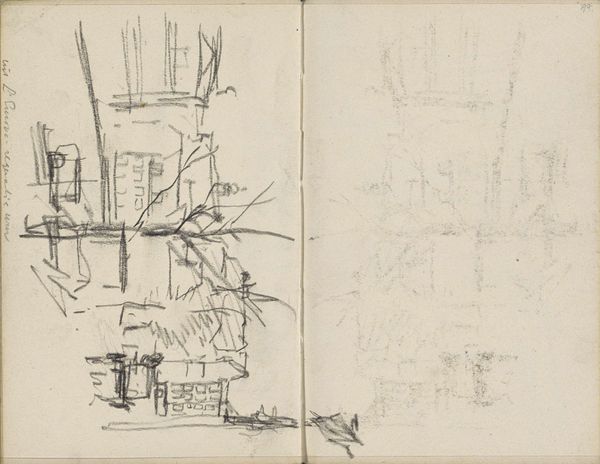
drawing, ink, pen
#
drawing
#
quirky sketch
#
dutch-golden-age
#
pen sketch
#
sketch book
#
incomplete sketchy
#
personal sketchbook
#
ink
#
ink drawing experimentation
#
pen-ink sketch
#
pen work
#
sketchbook drawing
#
pen
#
cityscape
#
sketchbook art
#
realism
Copyright: Rijks Museum: Open Domain
Curator: Here we have Willem Koekkoek's "Lekpoort te Vianen," a pen and ink drawing from the late 19th century, currently held at the Rijksmuseum. Editor: Immediately, I’m struck by the sparseness of it. A rather lonely looking gate captured with a thin, scratchy line. The sketch book is open, but there’s no continuation on the other side. An intimate glance into the artist’s process. Curator: It does give a peek into Koekkoek’s artistic process. Think about the materiality – pen, ink, and paper, humble tools used to depict a monumental structure. The Dutch Golden Age influence is evident in the choice of subject, these kinds of cityscapes were really trending then. The lack of embellishment keeps it grounded, focused on form and architectural structure, the literal building blocks of urban life. Editor: The gate, or "poort", itself serves as a powerful symbol. It’s an entrance, yes, but also a barrier, a defined point between the known and the unknown. In a broader sense, a connection to our personal sense of passing through thresholds. Koekkoek’s focus perhaps suggests an exploration of the concept of access and limitation within society. The open gate would have invited passage, encouraging interaction and maybe symbolizing the accessibility to the society or settlement beyond it. Curator: Fascinating how you attach meaning. But think also about what wasn't included - the labor, and materials needed to keep up an old building. He perhaps takes these urban structures for granted. To him, a picturesque artifact that holds more cultural importance than it does pragmatic. Editor: Yes, the structure looks ancient, but there's an implied timelessness, too, maybe something of permanence amidst societal shifts. The sketch almost feels incomplete or haunted as though it captures more than just bricks and mortar; It invites introspection about time, memory, and place. It gives pause. Curator: I’m interested in this relationship between memory, work, and object. We are dealing with layers of both cultural significance as well as artistic creation, where the pen traces what endures beyond the work necessary to keep it here. Thanks for your interpretation. Editor: My pleasure. I'll be reflecting on that poort and thinking of what lies beyond, after this.
Comments
No comments
Be the first to comment and join the conversation on the ultimate creative platform.
